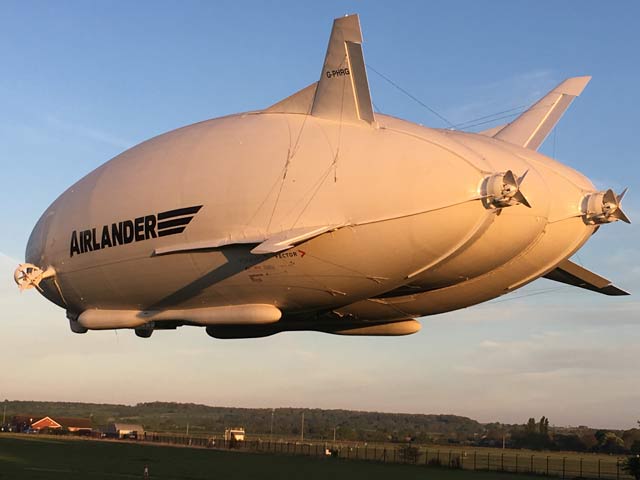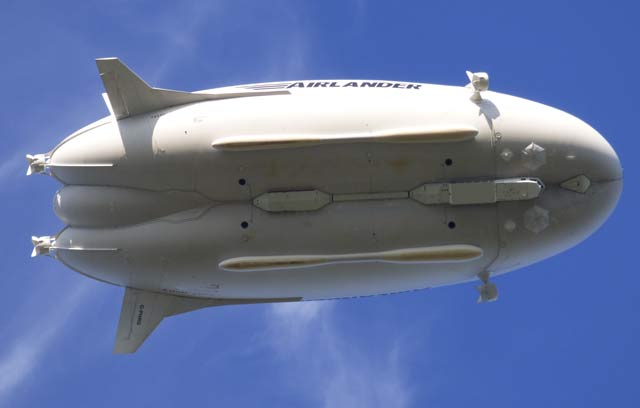The Airlander hybrid airship has flown again nine months after crashing on its second test flight. The world’s largest flying structure – built by Hybrid Air Vehicles – lifted from her moorings at Cardington airfield in the UK at 17.28 local time on 10 May, landing again after a flight of around 2h 45min.
Hybrid Air Vehicles tweeted regularly during the flight, posting photographs and updates. The aircraft was piloted by chief test pilot Dave Burns and experimental test pilot Simon Davies.

Hybrid Air Vehicles
The Airlander had left her hangar on 7 April, where she had been undergoing repairs and safety enhancements since the 24 August hard landing. Hybrid Air Vehicles said the latest flight "draws a line under the heavy landing". Additional safety features include a new winch system and “air bags” to to protect the cabin during a high-attitude touchdown.
The latest sortie is the third for Airlander, not including a flight it made as the highly-adapted HAV-304 for the US Army's Long Endurance Multi-intelligence Vehicle programme in 2012. After that programme was cancelled in 2013, HAV bought back the design and began modifying the aircraft for civilian use.
The recommencement of the flight test programme will take place over three phases, says HAV, with each one extending the radius from the Cardington base.
HAV says it achieved its three objectives from yesterday's flight: a safe take-off, flight and landing; to establish the aircraft's basic handling characteristics within a "well-defined flight envelope"; and to collect flight performance data.

Hybrid Air Vehicles
The company says the aircraft's new landing features "performed as expected". It adds that the "next few flights" are likely to be a week or two apart "in order to give time for a full analysis of the data collected on the flight".
Although HAV says the hiatus has cost £7 million ($8.7 million), the Bedford-based company remains upbeat about prospects for the 92m-long hybrid airship, insisting the delay has provided the opportunity to fine-tune the design. HAV has also outlined details of its strategy to become profitable – in the short-term using the prototype as a platform for research, and longer-term by entering production, with the company confident of signing up an overseas military launch customer in the next few months.
Source: FlightGlobal.com






















